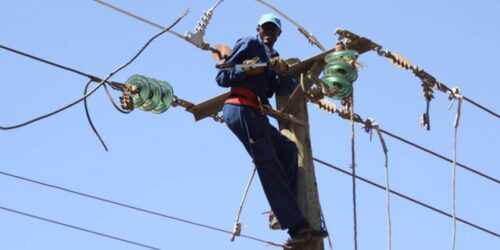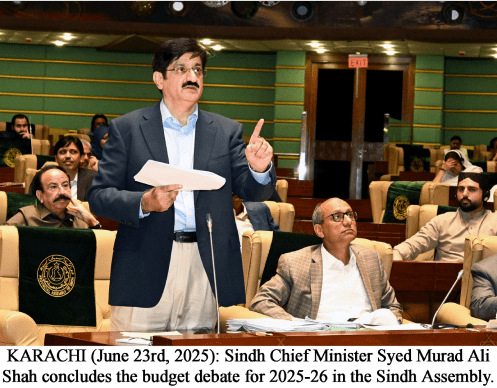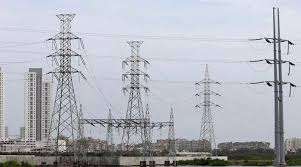Studies have been conducted in various countries around the world, notable of which was in Sri Lanka and Pakistan in the 1990s on the economic loss of unsupplied electricity. It was found that every kilowatt (kW) that was not supplied had an economic cost of at least $1/Kwh — Sh108 — and resulted in major dips in the gross domestic product of a country. Allow me to park this thought for now and revisit it towards the end of this article.
Last week, President Uhuru Kenyatta gazetted the appointment of a long-overdue task force on the review of Power Purchase Agreements (PPAs). Since then, a lot has been written about this task force and the sector, most of which I agree with, but some of which I disagree with. My friend Jaindi Kisero with whom we agree most of the times penned one article on March 31 in which he raised several points that I wish to address.
First, he touched on the composition of the committee. I fully agree that the John Ngumi-chaired task force as constituted today is competent enough to rationally re-look at the Independent Power Producers (IPPs) regime from a much broader perspective, critiquing what went wrong, exploring what can be negotiated (and the repercussions of the same) and recommending what needs to be done as we move forward.
The previous committee appointed by Energy Cabinet secretary Charles Keter was not sufficiently independent as it comprised mainly senior officers of Kenya Power, who partly got us where we are in the first place and whose primary interest would have been that of the company.
Going through the terms of reference, however, I felt that there should have been an overarching task — to review the financial stability of Kenya Power and propose ways of ensuring long-term sustainability. Kenya Power is the central pillar of the energy sector and piecemeal solutions may not help it as envisaged. Power generators, especially IPPs, maybe one of the problems, but perhaps the least of them. We need to look at the whole sector but focus more on the centre. Re-negotiations with the IPPs must come as part of finding a holistic and sustainable solution for Kenya Power.
Let me remind our readers that PPAs are bilateral agreements between Kenya Power and electricity generators. The Energy and Petroleum Regulatory Authority (Epra)’s job is to balance the interests of all stakeholders and to ensure the overall sustainability of the sector. It is not to negotiate prices. Kenya Power negotiates them jointly with the power generators and submits the PPA to the regulator to approve. So Kenya Power could have said no to any power generator. They had the power to do so but did not seem to have the will and the capacity to do so.
Let me now come to the point where I vehemently disagree with Mr Kisero when he says “We must accept that the experimentation with private producers, which we have been trying for several decades, is one of the main reasons why we don’t have cheap power”.
IPPS were not an experiment but a condition of accessing funds under the Energy Sector Recovery Programme of the World Bank and the International Monetary Fund (IMF).
IPPs had started developing power in various parts of the globe in the late 1970s and early 1980s to complement the seemingly inefficient and limited public utilities. They were seen as faster in implementation, more efficient in their operations and able to attract private capital into a sector that had been hitherto funded only by the multilateral funding agents.
In the 1996 Kenya’s development policy paper titled “Economic Recovery Strategy for Wealth Creation and Economic Development”, Kenya stated her intention to restructure the power sector and to promote private sector investment.
The Electric Power Act 1997 was also enacted, creating for the first time an independent regulator for the sector. IPPs are not what makes our energy sector expensive, rather a multitude of causes. If there were no IPPs today, the only public utility generator — Kenya Electricity Generating Company (KenGen) — could not meet the country’s demand and we could end up rationing power at a much higher cost than we are paying.
Let me now deal with the argument of “apparent” excess power.
We have no real excess power with an installed capacity of about 3,030 megawatts for a population of 50 million. Population-comparable countries in Africa have the following installed capacities — Algeria (43 million, 21,000 megawatts), South Africa (57 million, 44,000 megawatts) Morocco (35 million, 11,000 megawatts). And similar comparisons in Europe — Spain (47 million 110,000 megawatts), France (67 million 135,000 megawatts), Italy (60 million,122,000 megawatts). Even smaller population countries like Norway (five million, 36,000 megawatts) Sweden (10 million, 41,000 megawatts).
Those who argue that we have excess power in Kenya need to consider the following electricity industry realities. There is a difference between Capacity Installed and Effective Capacity, between Power and Electric Energy (E=Power* time) and between firm and non-firm power. Above all, a power system requires a reasonable amount of reserve margin to cater for inevitable system realities like unplanned outages, intermittent variable energy sources, among others.
Apart from these plants, Kipeto Wind (100 megawatts) and four solar plants — Malindi, Eldosol, Radiant, and Alten Solar in Keses — are in various stages of construction and commissioning with a total of 200 megawatts. There are a few others like Rumuruti Solar, Kopere and Kipeto ll that have got PPAs and are awaiting the Government Letter of Support.
Our power generation mix is therefore still very fragile. With an installed capacity of 1,800 megawatts, KenGen cannot be able to meet the country’s peak demand. We have about 800 megawatts from hydro sources that are dependent on hydrology. If there is a drought like we had in 1999-2000, we would not have enough energy generated. Also, wind and solar are intermittent, meaning that even if we consider a 300 megawatts wind plant, the Plant Load Factor (PLF) could be as low as 30 per cent (100 megawatts being available). Fortunately for us, Lake Turkana Wind Plant has got one of the best wind regimes, recording up to 60 per cent availability.
What our system is suffering from is a lack of demand and not an oversupply. This is what we need to address. When the Government of Kenya launched the 5,000 megawatts in 40 months programme in 2013, some of us were excited but inwardly concerned about the consequences of this very ambitious programme in the event that the demand did not grow as anticipated.
Unfortunately, the government’s projections were anchored on expected demand growth from the Rural Electrification Programme, and especially their last-mile projects. I recall my intervention at the Kenyatta International Convention Centre where I said, “ the total cost of putting up +5.000 megawatts would be about $13.75 billion and Kenya Power would have to pay Sh14 billion per month to amortise this investment over 20 years. Can Kenya Power be able to pay this amount?
Not too sure what happened to the programme, but the fact that Kenya Power is not able to pay for the current 3,000 megawatts installed shows that it would not have been able to pay for this ambitious programme unless the fundamentals had shifted significantly.
Most of the recent renewable IPPs have been contracted under the Feed-in-Tariff (FiT).
The FiT policy was first published in 2008. The policy simply tells the investor the available tariff that the government is prepared to pay for certain modes and sizes of generation. The initial FiT had rates of US 20 cents for solar and wind and there were no takers as the feasible threshold for these modes of power generation was US 23 cents/kWh.
The cost of solar panels and balance of plant continued to come down driven mainly by improved solar technology and huge demand, and our FiT was revised in 2010 to US cents 12 and US cents 11 respectively. Currently, they are at 7.5 US cents and 7 US cents although not yet formalised.
The notion of Take or Pay causes a lot of consternation to the consumers and the public in general. How do you pay for energy that you have not consumed? This is a question we hear over and over again.
This is not unique to Kenya and indeed all PPAs were initially on a Take or Pay basis. The principle is quite simple — a methodology of mitigating the power demand risk on the party best suited to mitigate it. The utility projects the energy demand curve and invites the private sector to build power plants. In all cases, the developer has to borrow monies that amount to millions of dollars. If the utility does not pay the developer, he will not be able to service his debt.
The capacity charge, which is paid whether energy is delivered or not, is for servicing the debt incurred in putting up the power plant.
As the task force sits down to deliberate on this important issue, I would urge them not to resolve the problem of Kenya Power with a short-term solution that will create a much longer-term problem not just for the energy sector but also for the whole investment climate in Kenya.
Let us address all the other issues that are ailing the sector. Let us talk of the 26 per cent commercial and technical losses at Kenya Power, and explore the energy storage options. Let us be innovative in our solution to the problem. Could, for instance, KenGen borrow cheaply and take over some of the plants? Going forward, should we adopt a model like the highly acclaimed REIPP project of South Africa that has added more than 6,000 megawatts of renewable energy over the last 10 years? How do we increase our demand compared to that of our peers?
These and many others are the questions that the task force must address if we are to get out of the muddle that we find ourselves in.
We need to look at the problems of Kenya Power and the energy sector with a much wider lens. Let us not gain today but in five years find ourselves with insufficient power and no one willing to invest in Kenya’s power sub-sector because the policies are unpredictable and shifty.






